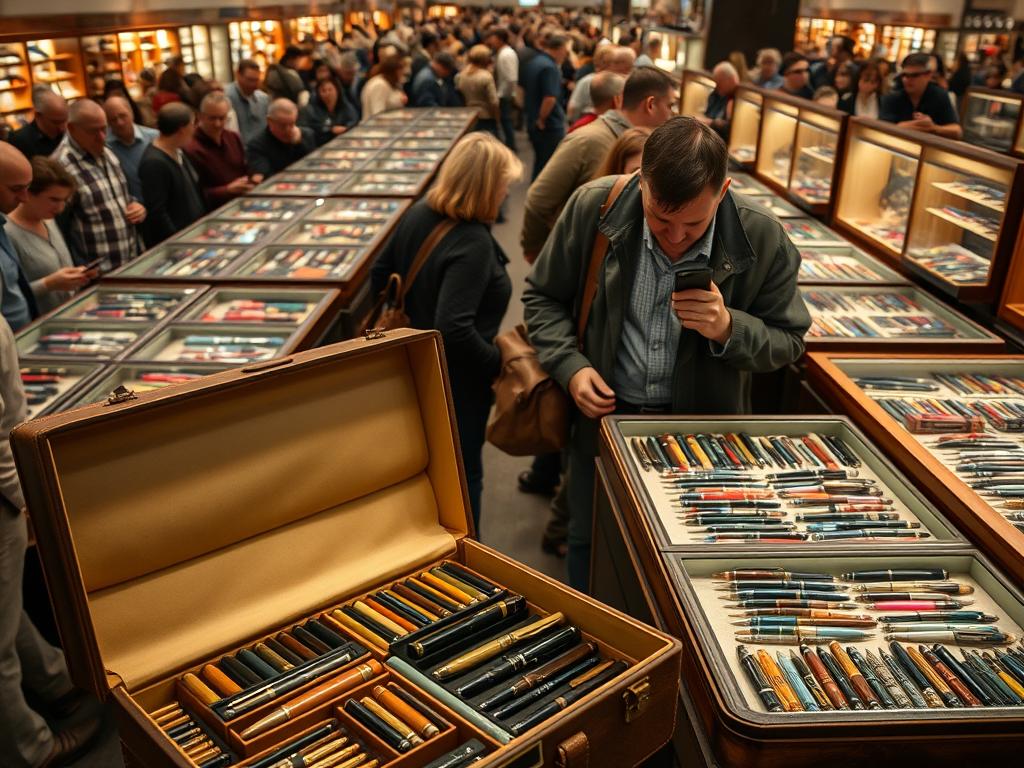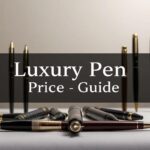There’s something special about holding a piece of history in your hand. Classic writing instruments, especially those crafted decades ago, carry stories in their design and craftsmanship. For many, these items aren’t just tools—they’re treasures that blend artistry with functionality.
Experts often highlight how older models stand out for their durable materials and intricate details. Unlike mass-produced modern alternatives, they reflect an era when every curve and nib was meticulously engineered. Events like the Ohio Pen Show offer enthusiasts a chance to explore rare finds and connect with others who share their passion.
Even well-loved pieces with minor wear have charm. Their imperfections often add character, revealing decades of use and care. Learning restoration techniques can turn a neglected gem into a functional heirloom, blending past and present.
Whether you’re drawn to the elegance of historic designs or the thrill of discovery, diving into this world opens doors to creativity and connection. It’s not just about owning a writing instrument—it’s about embracing a legacy.
Key Takeaways
- Classic writing tools often feature unmatched craftsmanship and historical significance.
- Events like pen shows provide opportunities to learn restoration tips and meet experts.
- Well-used items can still hold value, offering a tangible link to the past.
- Restoring older models combines practical skill with artistic appreciation.
- Exploring this hobby fosters connections within a passionate community.
Understanding the Timeless Appeal of Vintage Pens
The allure of aged writing instruments lies in their silent narratives. These tools carry whispers of past authors, thinkers, and everyday moments frozen in ink. Their designs reflect decades of innovation aimed at perfecting the art of putting thoughts to paper.
Historical Significance and Design
Iconic models like the Parker 51 reshaped how people wrote. Released in 1941, its hooded nib and sleek profile solved common ink evaporation issues. Similarly, Sheaffer’s touchdown filling system in the 1950s made refilling simpler than traditional lever designs.
These innovations weren’t just practical—they became style statements. Gold accents on clips or caps signaled sophistication, while unique ink flow mechanisms ensured smooth writing. Such details turned functional items into art pieces that still inspire modern creators.
Character, Patina, and Personal Stories
Over time, materials like celluloid or ebonite develop a soft glow called patina. This natural aging process adds depth, making each pen distinct. A scratch might hint at decades of use in a lawyer’s office, while a faded imprint could trace back to a mid-century classroom.
Owners often discover hidden histories through engravings or repair marks. One might find a fountain pen that traveled through wartime Europe or served as a family heirloom. For those curious about these stories, exploring antique fountain pens reveals how everyday objects become time capsules.
Whether admired for their engineering or cherished for their scars, these instruments connect us to the history they’ve witnessed. They’re not just relics—they’re active participants in new stories waiting to be written.
Insider Tips on buying vintage luxury pens
Navigating the world of classic writing instruments requires strategy. Knowing where to invest your money and attention ensures you find pieces that deliver both historical charm and reliable performance.

Setting a Budget and Defining Your Purpose
Prices vary widely—from $50 for user-grade models to thousands for rare designs. Decide early: Are you seeking a daily writer or a display-worthy collectible? This clarity helps avoid overspending.
Experts suggest rigid limits. “Allocate funds for potential repairs,” advises a seasoned restorer. Even pens with scratches or faded finishes can shine with care, making lower-cost options worthwhile.
Key Features: Nibs, Filling Systems, and Condition
A smooth nib is non-negotiable. Test ink flow by dipping the tip in water. Scratchy or misaligned points often need professional adjustment, adding hidden costs.
Filling mechanisms matter. Lever systems demand patience, while piston styles offer convenience. Check for cracks or rust—these flaws impact functionality.
| Purpose | Priority Features | Condition Tolerance |
|---|---|---|
| Everyday Writing | Nib smoothness, ink capacity | Moderate wear acceptable |
| Collectible Design | Rarity, aesthetic details | Minimal damage preferred |
Connect with the fountain pen network for trusted sellers. Forums and local clubs share insights on fair pricing and restoration tricks. Time spent researching pays off in finding gems that balance history with usability.
Restoration and Maintenance for Long-Lasting Performance
Breathing new life into classic writing instruments starts with smart care strategies. With basic tools and patience, enthusiasts can preserve their treasures while keeping costs much less than professional services.
DIY Restoration Techniques and Best Practices
Start by soaking dried ink reservoirs in lukewarm water for 24 hours. For stubborn clogs, an ultrasonic cleaner gently vibrates debris loose without damaging delicate parts. Swap cracked barrels or corroded clips with salvaged components from non-working models.
- Test nib alignment on paper before reassembling
- Use silicone grease to revive stiff piston mechanisms
- Polish celluloid bodies with microfiber cloths only
Maintaining Vintage Filling Systems and Nib Condition
A gold nib requires gentle handling. Flush it monthly with distilled water to prevent mineral buildup. For lever-style filling systems, check sac flexibility annually—brittle rubber leads to leaks.
Pen shows offer hands-on learning opportunities. “Always inspect feeds under bright light,” suggests a restorer from the Chicago Pen Network. These events let newcomers learn pens maintenance directly from experts.
Owners of a first vintage piece should document repairs in a logbook. Track ink types used and parts replaced. This proactive approach extends functionality while honoring the item’s history.
Navigating the Vintage Pen Market and Pen Shows
Exploring the world of classic writing tools feels like stepping into a living museum. Events like the Ohio Pen Show buzz with energy as collectors and experts gather to share stories, trade secrets, and showcase rare finds. This dynamic environment offers unparalleled opportunities to learn and grow your collection.

Evaluating Vendor Reputation and Testing in Person
Trust matters when selecting sellers. Seasoned collectors recommend checking online reviews and asking vendors about restoration methods. At shows, always test nibs by dipping them in water—this reveals ink flow consistency and scratchiness.
One collector recalls finding a 1940s model with a gold nib at a Chicago event: “Holding it revealed its balance. Testing the filling system confirmed it was worth the price.” Physical inspection helps avoid surprises, especially with intricate mechanisms.
Finding Rare and Quirky Pieces at Shows
Shows often feature pens made by lesser-known manufacturers alongside iconic brands. Look for designs with unique celluloid patterns or experimental nibs. User-grade items with minor scratches frequently offer great value—their imperfections tell richer stories than mint-condition pieces.
Tables piled with treasures invite curiosity. “I found one Japanese eyedropper from the 1920s hidden under modern models,” shares an attendee. Such discoveries highlight why hands-on exploration beats online browsing for uncovering hidden gems.
Conclusion
Exploring classic writing tools blends appreciation for the past with practical enjoyment. A good guide helps enthusiasts balance historical value with functional needs—whether prioritizing rare designs or reliable daily workhorses.
Remember, price and condition are starting points, not final judgments. Scratches on a cap or slight discoloration often add character without affecting performance. Focus on how the piece feels in hand and connects to your personal story.
Regular maintenance keeps these instruments working smoothly for decades. Simple work like cleaning feeds or replacing sacs preserves both mechanics and legacy. Pair this care with market knowledge from pen shows to make informed choices.
In the end, what matters most is finding ones that inspire you to write, create, or simply admire craftsmanship. Let this article serve as your guide—a bit of research and patience unlocks a world where every scratch tells a tale worth keeping alive.
FAQ
Why do collectors value historical design in older writing instruments?
Many appreciate how these pieces reflect craftsmanship from specific eras. Brands like Parker or Waterman pioneered unique nib shapes and materials, offering insights into the evolution of writing culture.
How does patina affect a pen’s appeal?
Light scratches or discoloration often tell a story of decades of use. While pristine models exist, subtle wear can add charm, making each piece feel personal and irreplaceable.
What should someone prioritize when selecting their first classic pen?
Focus on functionality—check if the nib writes smoothly and the filling system works. A restored lever-filler from Sheaffer or a working piston from Montblanc ensures reliability without heavy upfront costs.
Are rare filling systems difficult to maintain?
Some, like vintage snorkels or accordion fillers, require specialized care. Learning basic repairs or partnering with a trusted restorer helps preserve these mechanisms for daily use.
How can buyers avoid scams at pen shows?
Reputable vendors often provide testing stations. Inspect nib alignment, ask about restoration history, and seek sellers with documented expertise, such as those affiliated with the Fountain Pen Network.
Do quirky designs hold long-term value?
Unusual models, like Wahl-Eversharp’s deco-inspired pieces or flexible nibs from Mabie Todd, often attract niche enthusiasts. Their rarity and distinctiveness can make them desirable over time.


